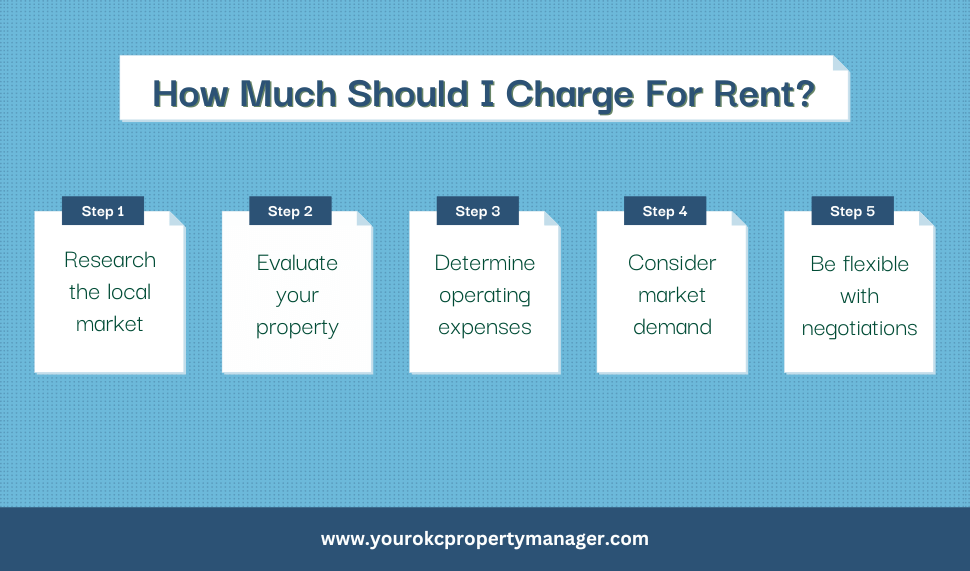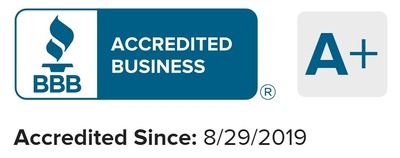Are you considering renting out your property as a Landlord? But you don’t know how much you should charge for rent? Determining the ideal Rent can be challenging in the ever-changing real estate market. The rental market for houses, apartments, and rooms continuously changes, making it challenging to establish a fixed rent. But don’t worry; we’ve got you covered.
While the ever-changing real estate market landscape can make it challenging to establish a fixed rent, proactive research, consideration of property features, and awareness of market demand and supply can empower landlords and homeowners to make well-informed decisions about setting an ideal rent for their properties.
Why Is It Important to Determine Rental Price?
It’s necessary to know how much to charge for Rent for various reasons, primarily for landlords and tenants. The following are some significant reasons why it’s essential to understand how much Rent to charge:
Maximizing Rental Income: Setting the accurate rental value of your property ensures you cover your expenses (mortgage, property taxes, maintenance) and generate a desirable profit. However, it shouldn’t be set too high or too low; otherwise, this creates a problematic scene. Charging overpricing leads to long vacancies and lost income while charging too low means leaving money on the table.
Attracting Quality Tenants: A competitive rental price attracts qualified tenants who are more likely to stay long-term, reducing vacancy rates and turnover costs. Qualified tenants take good care of your property and pay rent on time. Overpriced rentals sit vacant, while underpriced ones might attract less desirable tenants.
Covering Expenses: Owning property comes with many costs, including mortgage payments, property taxes, insurance, maintenance, repairs, and possibly utilities. Failing to set an appropriate rental price can lead to financial losses and can’t keep the property in good shape and improve it.
Market Competitiveness: Rent should be set by going rates in the area, which should be understood. Tenants might consider renting elsewhere if the Rent is too high compared to other properties in the neighborhood. However, if it’s too low, prospective tenants might think the property is subpar or think there are unreported problems.
Legal Compliance: In some areas, a landlord is not allowed to raise Rent for current tenants by more than a certain amount due to rent control laws or regulations. Understanding the proper Rent is critical to understanding the appropriate Rent to conform to these regulations and avoid any potential legal issues. You should also review our guide on what a landlord cannot do to ensure your rental practices stay compliant.
Property Value Assessment: A property’s overall value can be impacted by the Rent it brings in, particularly for investment properties. Rental income is frequently considered when estimating a property’s value by appraisers and prospective buyers.
Property owners can thoroughly research the neighborhood rental market, consider the property’s services and condition, compare it to nearby properties, and analyze applicable laws or restrictions when determining the right Rent.
Recommended: How to Collect Unpaid Rent After Tenant Moves Out
What Factors to Consider Before Renting Out Your Property?
Renting out your property can be financially rewarding but comes with duties and possible issues. Before renting out your house, there are some significant elements to consider to guarantee a profitable and pleasant rental experience. Here are some crucial considerations:
Here to take a look at the Pros and cons of renting a house

Legal and Regulatory Considerations: Learn about local, state, and national rental property laws and regulations. Landlord-tenant laws, fair housing legislation, and construction codes are examples of such laws. Check that your property satisfies all safety and habitability standards.
Financial Analysis: Determine the economic consequences of renting out your property. Compare possible rental income to mortgage payments, property taxes, insurance, maintenance costs, and other expenses. Check to see if renting is financially viable and sustainable. Get to know about the rent roll for financial analysis.
Insurance Coverage: Check with your insurance company to see if your homeowner’s policy covers rental properties. If not, you may need to purchase a landlord insurance policy that provides enough rental risk coverage.
Property Condition: Before renting out your property, assess its condition and make necessary repairs or renovations. A well-kept home attracts better tenants and reduces the possibility of complaints or legal difficulties.
Tenant Screening Procedure: Create a rigorous screening procedure to pick dependable and responsible tenants. Checking credit history, rental references, work status, and completing background checks are all possible.
Property Management: Decide whether to manage the property yourself or engage a professional company. Self-management of the property might save money, but it takes time and effort.
Lease Agreement: Create a detailed lease agreement outlining all rental terms and circumstances, such as rent amount, payment schedule, security deposit, restrictions, and tenant responsibilities. As a landlord, a well-drafted lease helps safeguard your rights.
Emergency Plan: Prepare an emergency plan to deal with crises and repairs immediately. Maintain open lines of communication with tenants and provide them with specific instructions on reporting maintenance issues.
How Much Should I Charge For Rent?
If you are considering how much to charge for Rent, there are a lot of things to consider. Renting out a property can be financially profitable, but choosing the optimal rent amount requires a thorough investigation. This comprehensive guide will review the crucial elements landlords should consider when figuring out the ideal rental Rent, such as comprehending the neighborhood rental market, assessing property attributes, financial repercussions, and legal requirements. The location, size, quality, amenities, and market demand are just a few variables that affect a property’s acceptable Rent.

The following steps will assist you in determining a fair rent amount:
Research the local market: Investigate the current rental costs for comparable properties in your area. Data can be obtained via online platforms, real estate websites, and regional management companies. Look through famous online real estate listing platforms such as Zillow, Trulia, Realtor, and local rental websites. These sites provide a diverse choice of rental listings in your area, allowing you to compare other types of homes, such as houses and apartments, with similar qualities to yours. At the same time, your prospective tenants are also evaluating what they can afford. You can use rent affordability calculator to estimate the income range a tenant may need to afford your rental comfortably.
Evaluate your property: Examine the unique features of your property that set it different from others. Consider the number of bedrooms, baths, square footage, parking availability, and special features. Tenants, particularly families and individuals concerned about safety, frequently prefer properties in secure and well-maintained buildings or gated communities. The overall square footage of your home is essential in deciding its Rent. Bigger houses often have higher rentals, but ensuring that the Rent aligns with the general market prices for like-sized properties in your area is critical.
Determine operating expenses: Include the costs of upkeep, such as taxes, insurance, repairs, maintenance, property management fees (if applicable), and utilities (if included), in your calculations. The costs should be considered if you have a lawn or landscaped areas that need routine upkeep, such as mowing, pruning, or snow removal.
Recommended Article: Everything About Rental Property Expenses
Consider market demand: Find out the need for rental homes in your area. You can charge somewhat higher rent prices if demand is high and supply is low. You can raise the Rent a bit if you discover a lot of directions and a small amount of rental housing in your neighborhood. However, it’s crucial to find a balance and avoid overpricing, given that tenants are likely to compare rental prices and select houses that provide good value.
Be flexible with negotiations: Remember that it’s crucial to strike the correct balance between being flexible in talks and preserving financial sustainability. Successful rent negotiations and an excellent landlord-tenant relationship result from adaptability while ensuring your rental income is sustainable.
Remember, the rental market can fluctuate, so it’s a good idea to reassess the Rent periodically to ensure it remains competitive and aligned with the market conditions. Additionally, always strive to maintain a fair and mutually beneficial relationship with your tenants to encourage long-term rentals and positive reviews.
Also, learn to run a credit check on potential tenants for renting.
How Can Landlords Put Houses Up for Rent?
It is an excellent idea and long-term thinking to consider how to rent a house that will make you money. There are various steps involved in renting out your home, which are as follows:
Prepare the property: Make sure your house is in decent shape before putting it for Rent. Remember, you only have one chance to make an excellent first impression, so don’t waste it. Depending on your target market, you can offer the property wholly or partially furnished. Provided properties are more appealing to tenants. Before listing the house for Rent, take photographs or do a video walk-through. This documentation will record the property’s state at the start of the tenancy, which can help avoid damage issues.
Create a marketing plan to rent your house: To reach a larger audience, use paid advertising on networks like Facebook, Instagram, and Twitter. Social media ads may be specific based on location, demographics, and interests, making them an excellent way to contact new tenants in your target area. Use a variety of marketing channels to promote your rental property. You can advertise it on websites like Zillow, Trulia, Redfin, and Craigslist. Participate in local community events or fairs to market your rental property. Set up a booth with fliers and pamphlets and interact with attendees to spread the news.
Select a tenant: Choosing the correct tenant is essential in the leasing process to guarantee both parties a happy and successful experience. Provide applicants with a thorough rental application form that collects critical information such as employment history, rental history, personal references, and contact information. Examine these forms thoroughly to gain a thorough understanding of each applicant’s background. To streamline the screening process and cover associated costs, consider charging a rental application fee. Set specified screening criteria for candidates to meet before promoting the property. Request pay stubs, employment verification letters, or bank statements to verify the applicant’s income.
Understand Legal Obligations: Knowing and following landlord-tenant rules is critical for all property owners and landlords. These laws differ by jurisdiction, so knowing the exact restrictions that apply to your locality is vital. A written lease agreement is required to define the tenancy’s terms and conditions. The lease should include the rent amount, payment due date, lease duration, landlord and tenant responsibilities, pet policies, and dispute resolution methods. Understand the regulations and guidelines governing tenant screening.
Determine the rent price: Choosing the right rental price is an essential stage in renting since it attracts potential renters and keeps your property competitive in the market. Look for similar properties now available for Rent in your neighborhood or adjacent locations. Take note of properties that have similar sizes, layouts, and amenities. This can give you an idea of the rent range in your area for your home type.
Recommended Article: How to manage rental property as a landlord
Best Rent Estimate Tools
Here are some of the best rent estimation tools, which will help you estimate the average rental price based on the surrounding area of the rental property and property type. This will help you to make a decision on how much to charge for rent.

Zillow: Zillow is a popular real estate website that offers estimated rental prices for residential properties. By establishing specific criteria for searching based on their budget, preferred area, property type, and other factors, clients can focus their search for a rental home. Thanks to this, they can quickly find properties that suit their needs. Using the Zillow website, renters can rate and review the properties they have rented.
Rentometer: The website Rentometer provides a user with an estimate of the price range in the area surrounding the relevant property. Users can obtain a basic rental estimate for their home during the free trial’s seven days, and the pro edition, which costs money, offers more thorough rental property data.
Rent Range: Rent range is an exclusive rent estimate service. Because it doesn’t provide a free version or trial, its subscription-based service provides helpful data for property managers and landlords looking for complete rental price information.
RentFax: Rentfax is a service that estimates rental prices or does any other rental-related activity. They provide a variety of services to assist you in locating excellent rental investment homes. Rentfax supports investors, lenders, real estate brokers, and others in measuring and comparing income risk by providing a unique perspective on any residential investment property in the United States.
Trulia: For purchasers, sellers, and renters, Trulia is a user-friendly real estate website that provides various tools and resources. Homes for sale and Rent are available in great numbers on Trulia. Users can do property searches using multiple criteria, including location, cost, type of property, and more.
Common Mistakes Landlords Make While Setting Rental Prices

Setting the appropriate rental price is essential for landlords to draw tenants and increase earnings. A common mistake is a lack of market research, which results in overpriced properties with extended vacancies or underpriced ones with lost revenue. The local real estate market must be studied, and demand and unique property attributes must be considered. A further mistake is underestimating or overestimating a property’s appeal because you ignore its amenities and condition.
Precise evaluation, essential improvements, and modern amenities support increased rental rates and drew high-caliber tenants. Another issue is disregarding market trends and tenant input. To maintain competitive pricing and retain happy tenants, landlords should frequently examine rental prices, consider tenant feedback for changes or modifications, and keep up with local rental market conditions. Owners may efficiently set rental rates, entice trustworthy tenants, and optimize their investment profits by staying away from these blunders.
Recommended Article: How to Set the Rental Price for Your OKC Rental Property
Wrap Up on How Much to Charge For Rent
Landlords should undertake in-depth market research, objectively evaluate the worth of their property, and be attentive to tenant comments and market movements to avoid frequent mistakes when setting rental prices. Landlords who do this can effectively position their rental properties, draw dependable renters, and maximize the returns on their investments.
If you want a consultation about renting your property and experiencing the best property management in Oklahoma, contact Property Management OKC today by calling 14052325800. We are experienced property managers committed to providing our clients with the best possible service.
FAQs on How Much Rent Should I Charge?
Is there a specific formula to calculate the Rent?
Yes, there are a few specific formulas to calculate Rent which are listed below: The 1% rule states that the monthly Rent should not exceed 1% of the property's market value. For example, how to use the 1% rule to calculate the Rent: Property Market Value: $268,000 Monthly rent: $268,000*1% = $2680 The 50% rule states that a landlord's Rent must equal 50% of their monthly costs, including mortgage payments, property taxes, and maintenance fees. For example, how to use the 50% rule to calculate the Rent: Monthly Expenses: $2680 Monthly rent: $2680*2= $5360 The comparable Rent involves looking at the lease of similar residences in the same neighborhood to understand what is reasonable.
Can I increase the Rent during the lease term?
Increasing the Rent during the lease term relies upon the particular duration of your Rent and the laws of the state where the property is located. Without the tenant's agreement, the property manager cannot raise the lease during the Rent. Nonetheless, if the tenant agrees or, on the other hand, assumes the lease is below the market rate, the landowner might raise the lease. Get to know about landlord's guidelines for increasing rent.
How often should I review my rental pricing?
You should review your rental pricing at least once a year. If the rental market in your area is changing rapidly, you need to analyze as often as possible your valuing more.
What is the 1% rule for the rental property?
The 1% rule for rental properties is a general guideline that states the monthly rent for a property should be at least 1% of the total purchase price.

Author
Scott Nachatilo is an investor, property manager and owner of OKC Home Realty Services – one of the best property management companies in Oklahoma City. His mission is to help landlords and real estate investors to manage their property in Oklahoma.
 (
(









